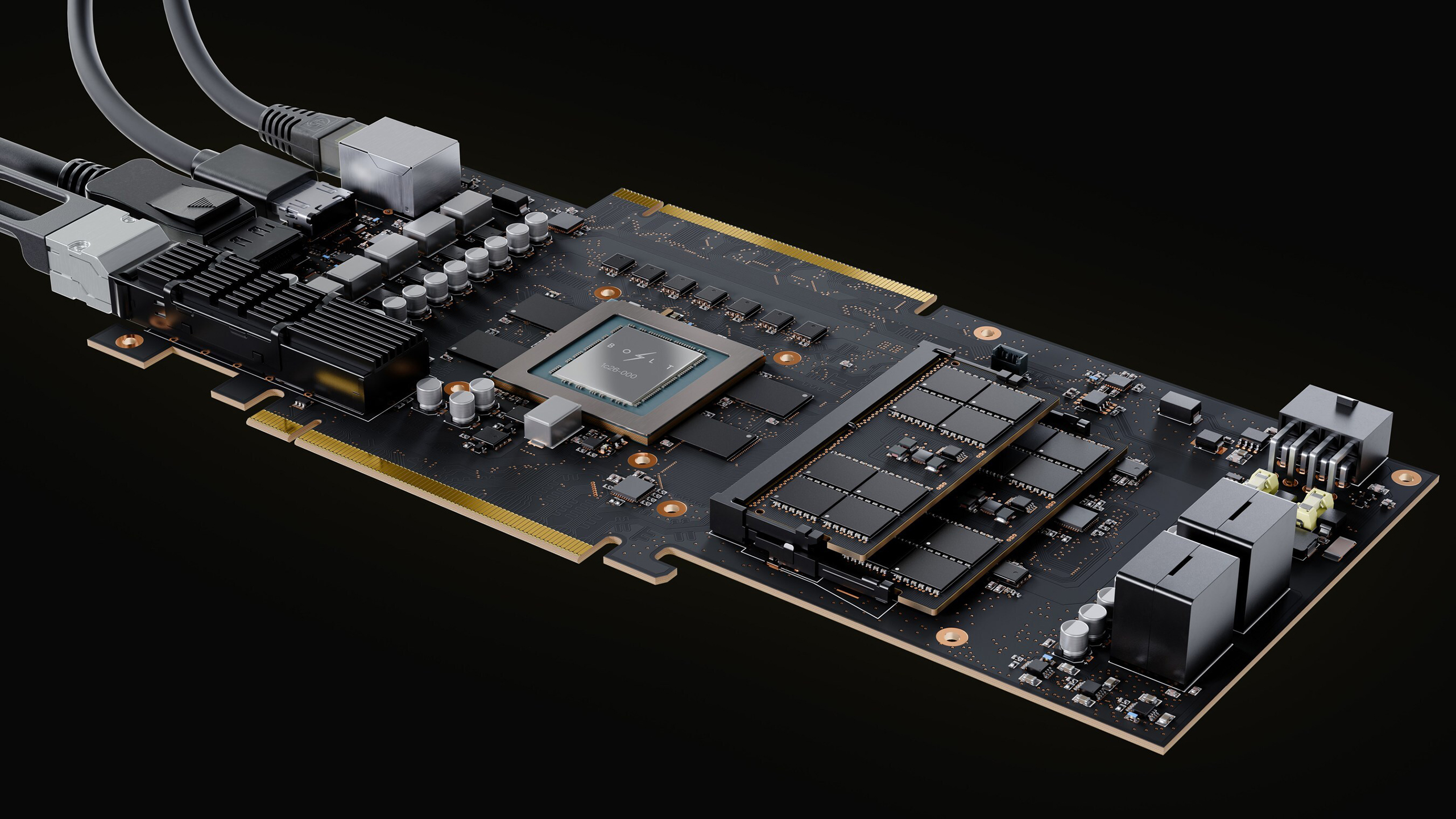Bolt Graphics brings its RISC-V graphics cards to Ubuntu Summit — Zeus path tracing GPUs target film and animation industry
Bolt talks the software behind its upcoming GPU; AI not mentioned once

Bolt Graphics' Zeus GPUs have slowly but surely been generating hype ever since the startup first announced its RISC-V GPUs in March. With its 2026 hardware launch steadily approaching, Bolt made a surprise appearance at the Ubuntu Summit 25.10 this week to talk about the software stack enabling its over-the-top hardware performance claims of being 13 times faster than Nvidia's RTX 5090.
Antonio Salvemini, Director of Graphics Engineering at Bolt Graphics, presented a talk entitled "Beyond the Silicon: Redefining GPU Innovation Through Software and Methodology" at the Summit. Salvemini talked extensively about Bolt Graphics' primary focus on path tracing, a graphics technology used primarily in the animation and film VFX worlds.
Path tracing is a step beyond ray tracing, but both rendering technologies have been an integral part of the Hollywood VFX pipeline for years and have only entered the consumer and gamer conversations in the current decade. The Zeus line of GPUs is being advertised, especially at the Ubuntu Summit, to be a way for visual effects artists to render path-tracing visuals in real-time.
"The problem with ray tracing is that each light wave only bounces one way," said Salvemini in his talk. "In path tracing, they can bounce anywhere, and you randomly select just some of these paths to display." Path tracing traces light beams in reverse order, from the digital camera back along its exact path, bouncing from object to object, until it returns to the light source it would radiate from, creating a hyper-realistic light simulation only within the bounds of what the "camera" can see, reducing graphical overhead greatly.
Salvemini highlighted the Zeus team's use of Intel's Open Image Denoise open-source library for denoising ray- and path-traced images and the MaterialX open standard for shaders and textures as key parts of the Zeus pipeline for achieving path-tracing performance that is 13 times faster than the RTX 5090, according to Bolt's own internal benchmarks.
The Zeus GPUs are built with a multi-chiplet RISC-V design on the RVA23 profile, and will be some of the first consumer chips on the new profile. The RISC-V open standard ISA has been traditionally used for lower-lift hardware such as MCUs and microcontrollers, making Bolt Graphics some of the frontrunners in taking the ISA into the consumer and professional CPU/GPU realms.
The company's choice to present at the Ubuntu Summit 25.10 was likely due to a goal to break into the Hollywood VFX and animation market. The Motion Picture Academy and Dreamworks have both hosted talks at Ubuntu Summits before, both discussing motion picture software. Bolt's own promotional materials for the Zeus line have heavily pandered to animation giants like Disney and Lucasfilm in the past. And Bolt Graphics is certainly not targeting the saturated AI or gaming markets with the Zeus line, as not a single mention of the "AI" acronym can be found anywhere on the company's website FAQ.
Get Tom's Hardware's best news and in-depth reviews, straight to your inbox.
Bolt Graphics's Zeus line of GPUs has a chance to shift the future of computer graphics and RISC-V forever if it finds success; rapidly accelerating VFX pipelines and majorly heightening the profile of RISC-V would both be major wins attributable to the startup. For our original deep dive into the spec sheets of all four Zeus GPUs, check that out right here.

Sunny Grimm is a contributing writer for Tom's Hardware. He has been building and breaking computers since 2017, serving as the resident youngster at Tom's. From APUs to RGB, Sunny has a handle on all the latest tech news.
-
bit_user Reply
Those specs just scratch the surface, sadly. At the time, I devoured everything I could find and concluded that they're using somewhere between 32 and 128 RISC-V cores per chip and running at 2.6 GHz. How many cores they have depends a lot on the SIMD width you think they implemented. I'll throw a stake in the ground and say it's probably 64 cores with 2x 512-bit pipelines, each.The article said:For our original deep dive into the spec sheets of all four Zeus GPUs, check that out right here.
Also, they're using some hardwired engines to do at least a portion of the ray tracing. Based on a patent filing someone found, it seems like they accelerated not only ray-intersection tests, but also BVH construction & traversal.
Anyone who's interested in the matter might pick up where I left off:
https://forums.tomshardware.com/threads/startup-claims-its-zeus-gpu-is-10x-faster-than-nvidias-rtx-5090-bolts-first-gpu-coming-in-2026.3875286/post-23451003 -
bit_user Reply
I take your point about this not being an AI accelerator, but I would just point what Intel says about Open Image Denoise:The article said:Salvemini highlighted the Zeus team's use of Intel's Open Image Denoise open-source library for denoising ray- and path-traced images
...
Bolt Graphics is certainly not targeting the saturated AI or gaming markets with the Zeus line, as not a single mention of ... "AI"
At the heart of the Intel Open Image Denoise library is a collection of efficient deep learning based denoising filters, which were trained to handle a wide range of samples per pixel
Source: https://www.openimagedenoise.org/
So, it certainly depends on AI. And if the Bolt hardware isn't running Open Image Denoise, then you'll probably want a fast host for running it, because I found a benchmark of using it to process a 4k image, where a Ryzen 7950X managed only 0.87 fps. Open Image Denoise is AVX-512 optimized.
https://openbenchmarking.org/test/pts/oidn&eval=035f9514f25810ee9ac4f62b78784a2faadff9cb